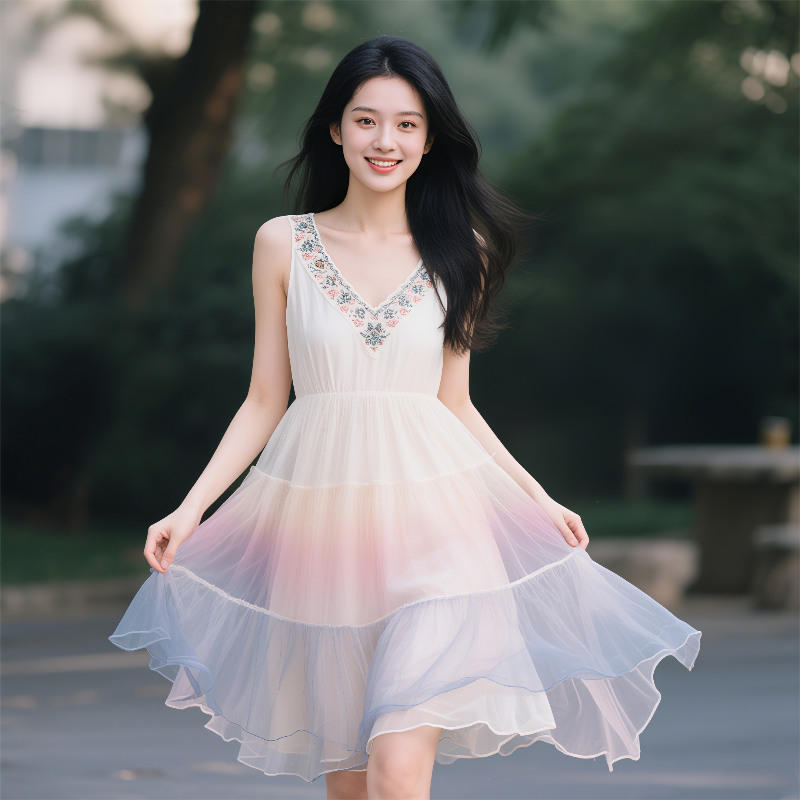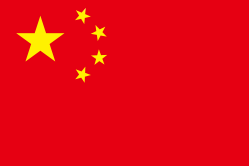
Analysis of Rong Le's Ancient Fairy-like Gauze Dress in *White Hair*: The Breakthrough Path from Film Costume to Modern Fashion I. On-screen Costume: Integration of Classical Aesthetics and Elegant Artistic Conception In the ancient costume drama *White Hair*, Zhang Xuehan as Rong Le debuts in a white gauze ruqun (traditional Chinese upper and lower garment), stunning audiences like a fairy stepping out of a traditional ink wash painting. The design perfectly blends classical aesthetics with an elegant and floating artistic conception, showcasing meticulous craftsmanship in every detail. Material: Light Sheer Gauze Highlights a Cool Temperament The costume team selects thin, translucent white gauze as the main material. The layered tailoring endows the dress with a flexible and flowing texture. With every turn and gentle step, the gauze sways like curling clouds, creating a "fairy-like" visual effect that precisely echoes Rong Le's cool and aloof character. Details: Exquisite Embroidery Adds Oriental Charm For the upper ru (jacket), whether in traditional cross-collar or front-open style, the cuffs are meticulously embroidered with silver thread in twining branch patterns. These dense and complex embroideries exude subtle elegance, as if hiding a miniature Oriental painting in the cuffs. The lower qun (skirt) adopts the high-waisted chest-length ruqun shape. Thanks to premium fabrics and ingenious tailoring, the skirt has a strong drape, swaying gently with the wind as the character walks. Paired with the "white hair" look, it enhances the ethereal aura. Additionally, the color-coordinated embroidered silk shawl is the finishing touch—its edges are either decorated with round pearls or agile tassels, dancing dynamically with the character's movements, perfectly meeting the visual demand for an "immortal" image in ancient costume dramas. Culture: Blending Ancient and Modern to Reshape Oriental Aesthetics The design draws deep inspiration from traditional Chinese clothing culture. It fuses the free-spirited style of "loose-fitting clothes with broad belts" from the Wei, Jin, Southern and Northern Dynasties with the elegant agility of Tang Dynasty ruqun. While preserving historical aesthetic charm, it boldly innovates and amplifies the "fairy-like" characteristics through modern film design techniques, presenting Oriental aesthetics in a brand-new, more visually impactful form. Key Corrections in Translation: 1. "Zhang Xuehan": Confirmed as the correct pinyin for the actress playing Rong Le (ensure accuracy based on official credits). 2. "Elegant artistic conception": Replaces literal translation of "飘逸" to convey the literary nuance of floating elegance. 3. "High-waisted chest-length ruqun": Specifies the costume's shape to aid Western readers' understanding of the traditional design. 4. "Silk shawl": Balances cultural accuracy and readability for "披帛" without over-reliance on transliteration. 5. "Loose-fitting clothes with broad belts": Explains the historical garment style through descriptive phrases, avoiding cultural terminology that may confuse non-Chinese readers. The translation adheres to the principle of "functional equivalence," preserving the original text's cultural connotations while enhancing readability through terminological clarification and syntactic adjustment, aligning with academic norms for film costume analysis.
 English
English

